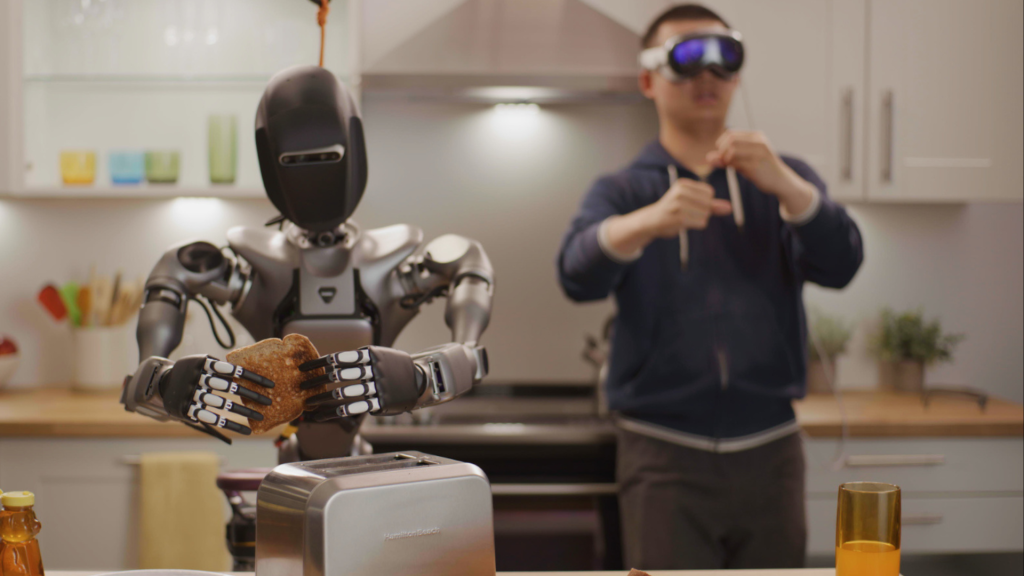
After the AI boom, Nvidia has dominated the GPU and AI accelerator market. Valued at over $3 trillion, the company is now channeling its resources towards robotics, a transition Deepu Talla, VP of robotics, calls ‘The ChatGPT moment for physical AI and robotics.”
According to a report by the Financial Times, in the first half of 2025, Nvidia will introduce a specialized computer within the Jetson platform as a new product in its robotics venture. Jetson Thor is a compact computer meant to position Nvidia as the go-to platform for humanoid robots.
Talla explained that this initiative commenced as a response to two technological breakthroughs. These include the rapid advancement of generative AI and the enhanced capabilities to train robots in increasingly sophisticated simulated settings. “The shift is a calculated move based on our technological progress and market readiness,” Talla noted.
Advertisement
Advertisement
By enabling developers to exploit the full potential of generative AI and advanced simulations, Nvidia aims to become a leader in robotics.
Jetson Thor is destined for success in next-gen robotics
During an interview, Talla stated that the market has reached a pivotal “tipping point” for physical AI and robotics. Nvidia’s strategic approach does not involve direct competition with established manufacturers like Tesla and Figure AI.
Instead, the company plans to provide essential OEM services to a vast network of robot makers. “Our goal is to empower the hundreds of thousands of innovators in the robotics space with the tools they need to create and evolve,” Talla explained at a press conference in Tokyo.
The Nvidia Jetson platform is a comprehensive ecosystem for AI-powered devices, encompassing a series of System-on-Modules (SoMs), software, and development tools. Built upon this platform are Jetson Computers, which are specific devices like development kits or production-ready computers incorporating Jetson modules.
Advertisement
Advertisement
The latest addition to the platform is Jetson Thor, a specialized computer designed for powering sophisticated humanoid robots, expected to be released in 2025.
Boasting an impressive 2,000 teraflops, Jetson Thor is engineered to tackle the most demanding AI tasks with unprecedented speed and efficiency. This powerhouse will enable humanoid robots to perform complex functions such as real-time object recognition, natural language processing, and autonomous navigation.
In February 2024, over a million developers worldwide actively used the Jetson platform to pioneer edge AI and robotic technologies. More than 6,000 companies, a third of which are startups, have integrated these tools into their products, which means there is already a thriving community for these products and a dependable foundation for Nvidia to build upon.
Nvidia’s tech stack sharpens the edge in robotics
In a bid to position itself as the indispensable platform for robotics developers, Nvidia has carefully crafted a full robotics stack that includes everything from DGX systems for training AI models to the Omniverse platform for creating digital twins, as well as the powerful Jetson hardware.
Advertisement
Advertisement
More in Technology
In the past year, advancements in bridging the ‘sim-to-real gap’ have been significant, enabling simulations combined with generative AI in previously unimaginable ways. “The gap between simulated environments and real-world applications has narrowed dramatically, opening up new possibilities for robotic development,” Nvidia executives highlighted.
Rev Lebaredian, Vice President of Omniverse and Simulation Technology at Nvidia, plays a crucial role in this endeavor. He spends his days developing physically accurate digital representations of the real world, known as digital twins, which are essential for training AI in a controlled, virtual environment. “Creating intelligent robotic systems starts with a robust digital foundation where they can learn and evolve,” Lebaredian explains.
Strategic diversification and outpacing rivals
Nvidia’s push into robotics comes as major tech players like Amazon and Google strive to reduce their reliance on external AI chips by developing their own, but Nvidia continues to influence key market segments. Notably, Nvidia remains a critical supplier for Tesla’s humanoid robot, Optimus, among other projects.
Recent strategic investments also emphasize Nvidia’s commitment to robotics. The company was a key investor in the $675 million funding round for Figure AI, alongside other tech giants like Microsoft and OpenAI.
Advertisement
Advertisement
Similarly, Apptronik, another innovator leveraging Nvidia technology, has recently partnered with Google’s DeepMind to advance its robotics initiatives further. As Nvidia faces increasing competition from competitors like AMD in the AI chip market, diversifying into robotics is not just a strategic shift but a necessity.
AI currently generates 88% of Nvidia’s $35 billion quarterly revenue. Still, since the robotics market is expected to nearly double by 2028, the company is clever to amplify its efforts in this direction.
EMEA Tribune is not involved in this news article, it is taken from our partners and or from the News Agencies. Copyright and Credit go to the News Agencies, email news@emeatribune.com Follow our WhatsApp verified Channel





